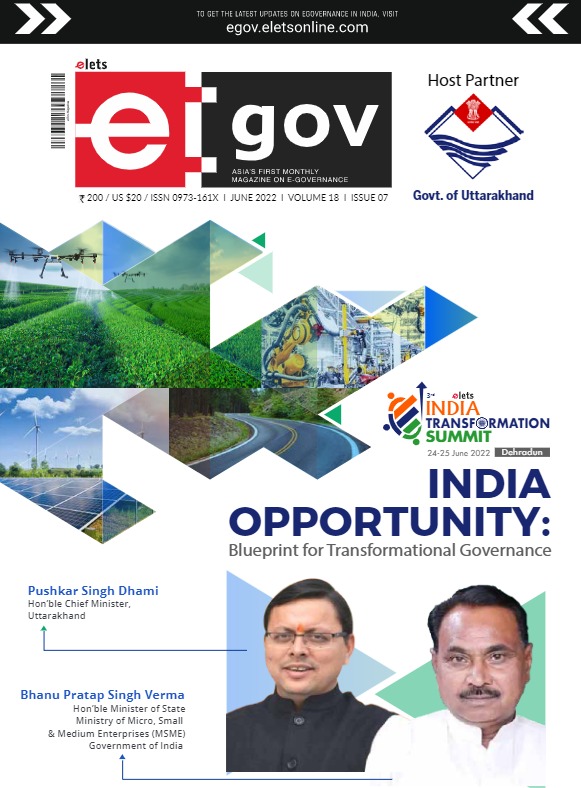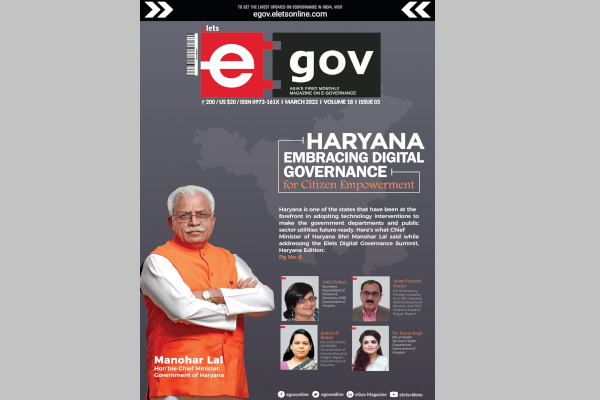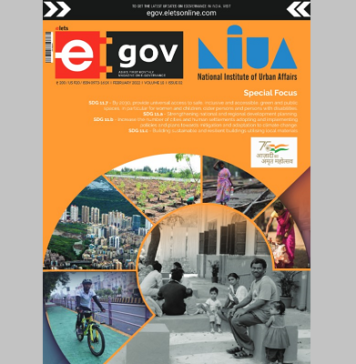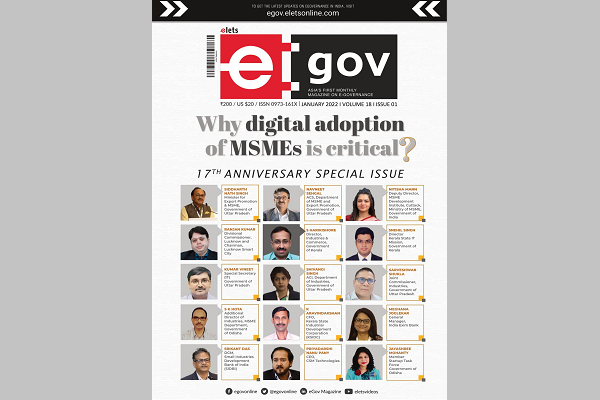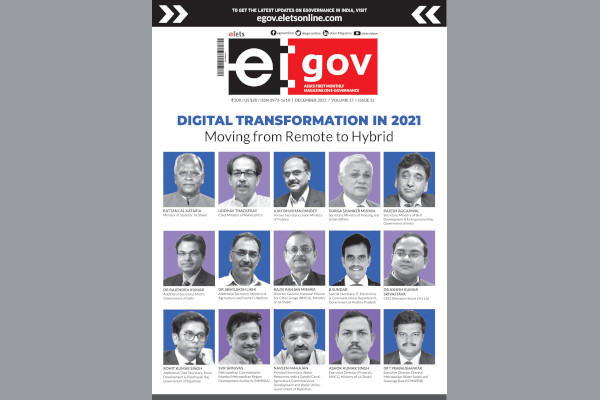
As we make progress, the concept of smart city will mature in India. Unlike the present airport model or highway model, wherein the investor is mainly focused on collecting revenue from citizens, the model here is different as there is no transactions with citizens, says Neelesh Kelkar, National Head-Smart Cities, Indus Towers, in conversation with Gopi Arora of Elets News Network.
How did Indus Towers foray into telecom and Smart Cities segment in India?
I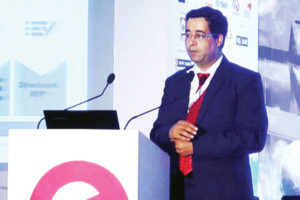 ndus Towers was formed as a joint venture between three competitors some 10 years back. The company was based on a unique business model which was referred to as a business case study at the Harvard School, and prompted the founders to come together to form a mutually- beneficial vision of improving the overall Indian landscape, with special focus on telecom infrastructure.
ndus Towers was formed as a joint venture between three competitors some 10 years back. The company was based on a unique business model which was referred to as a business case study at the Harvard School, and prompted the founders to come together to form a mutually- beneficial vision of improving the overall Indian landscape, with special focus on telecom infrastructure.

The concept was about a shared infrastructure—kind of technology neutral—which at the same time offered the tenacity to do multiple things. That is the unique business proposition Indus has been focusing upon all these years and today it has emerged as a very successful business proposition.
Of late, apart from shared infrastructure networks are also getting denser. After the launch of 3G and 4G and now soon to be launched 5G services, we see the emergence of two issues that need to be addressed.

Firstly, there is a capacity enhancement requirement; while the coverage is adequate, the capacity is not. So, we need to add more smart structures.
The distance between two telecom towers is coming down too. So, if the distance between two towers is decreasing, to say 150 meters or less than that, then we have to develop in public areas smart infrastructure which will be a pole that we call ‘street furniture’. Street furniture is all those street infra elements like Bus stops, public utilities etc . Without disturbing the city landscape, this smart infrastructure would no more be in the form of a conventional tower we are used to seeing.
In the cities facing congestion problem, this issue is becoming more and more relevant. Hence, in relation to a smart city, we looked at this issue from different angles. Firstly, densification of a network would call for closer sites. Secondly, the acquisition of a property at a public place is difficult from the telecom sector perspective. So, what we thought of is that the time has come when we should come up with futuristic sites and make them available to telecom players.
We wanted to go for bulk acquisition of sites. Under the Smart Cities Mission, we saw opportunities on two fronts: firstly, acquisition and expansion of sites and thereafter getting some concessions from the government, and secondly, building ready-made infrastructure with fiber connectivity to take care of the smart equipments to be installed. As such infrastructure is going to play a crucial role in Digital India. However this infra is highly maintenance centric also. Since we at Indus are willing to invest and maintain this infra, city management body need to not invest in this infra elements. Also, we have pioneered the O&M (Operations and maintenance)
practices because of our huge installed base across country. We offer this kind of expertise to Government that we can maintain and manage all these poles very efficiently.
Give us more details about the Indus towers operations.
 Indus focus on passive infra of telecom industry. And as you know telecom is highly SLA centric activity.
Indus focus on passive infra of telecom industry. And as you know telecom is highly SLA centric activity.
The Uptime in telecom is very important. Indus committed to give high quality service by ensuring best possible updtime. In order to achive this we continuously monitor all of telecom structure 24×7 through our tower operation centre. Presently we monitor more that 120000 towers in more than 15 circle for 24x 7 from our Chennai and Gurgaon centre These centres enable us to respond for any maintenance related issues.
If I ask about your holistic contribution to the smart city mission in India, what would be your reply?
As we make progress, the concept of smart city will mature in India. Unlike the present airport model or highway model, wherein the investor is mainly focused on collecting revenue from citizens, here the model is different as we don’t collect revenue directly from citizens. Telecom operators are the main source of generating revenue here. With our approach, the burden on local urban bodies will come down as the investments will be made in an industry which is able to efficiently manage and monetize smart structures. This is the main contribution from our side, I would say.
Tell us about the key challenges you have been facing?
The first challenge I would like to cite is the threat coming for the telecom sector per se. Presently, the telecom sector is passing through a rough patch. Competition is getting tougher day-by-day and anticipating monetizable avenues for telecom has become more challenging. Also, because of consolidation, some exits are happening.
India has never worked under PPP model very aggressively. Though authorities see an advantage in this model, there is some degree of hesitation to go for the PPP model especially at ULB level. As the PPP model works on a long-term horizon, we need to keep harnessing the investment that is mostly coming for industry players.
Technology upgradation at regular intervals is also important. I have seen tenders where even after RFP was issued the contract was finalised only after 24 months, by which time the technology changed. This is something we need to address.
The worldwide telecom market is estimated to be worth $40.02 billion in 2017, so what’s your take on the Indian telecom market’s potential and growth, say, in the next five years.
In India, during the last one year, we have seen a lot of consolidation. A lot of players have exited too. This is a good sign for the industry. Such trends will soon settle down and then we will have a next phase of growth for the Indian telecom sector which we expect. So at Indus towers, we expect newer dimensions such as IoT, the blockchain, and all the latest digital technologies to create more opportunities. Further, I believe all telecom players are mentally ready to face such times.
The telecom minister has said that they are ready to partner with the private player for PPP models. How do you see Indus Towers benefitting out of this development?
When we interact with policymakers, we say that for India to be ready with 5G, infrastructure needs to be ready. And for this purpose, the concept of shared infrastructure is well appreciated by all stakeholders.
What are the geographies you plan to tap in terms of smart cities operations? At the moment, out of 100 smart cities, we are focussing on several select smart cities. In addition, we are also focusing on allied industries, be it EV charging, WIFI model etc. Many hybrid models of investments are also being explored with various city corporations.
With how many smart cities projects, Indus Towers is currently working with?
We have already signed three contracts with three State Govt bodies. One is with New Delhi Municipal Corporation, Vadodara municipal corporation agreement has been signed, and more than 80 sites have been rolled out. We have also done a project for Bangalore WIFI City. In addition, discussions on six –eight projects is at a very mature level with different State bodies.
Be a part of Elets Collaborative Initiatives. Join Us for Upcoming Events and explore business opportunities. Like us on Facebook , connect with us on LinkedIn and follow us on Twitter, Instagram.




